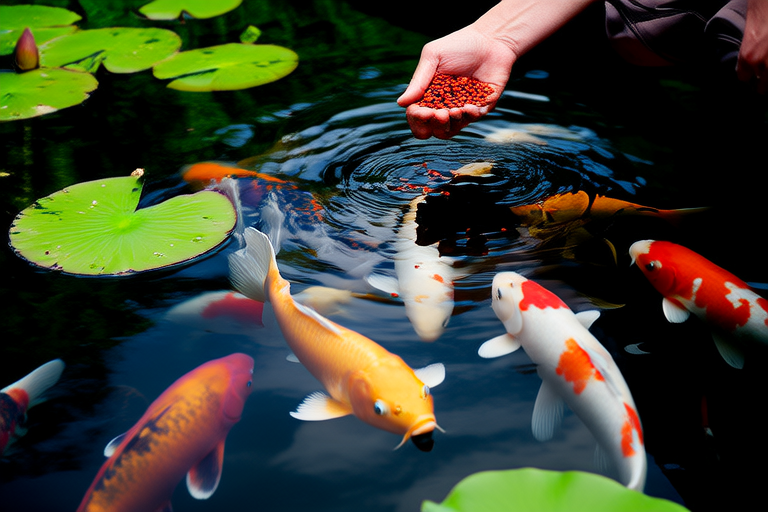
Mastering Koi Feeding: Secrets to Keeping Your Fish Healthy and Happy
Welcome to the fascinating world of koi keeping! Among the many aspects of caring for these magnificent fish, proper feeding stands out as one of the most crucial elements for ensuring their health and longevity. A well-fed koi not only thrives but also contributes to the aesthetic appeal of your pond. This article will guide you through the nuances of koi feeding, offering insights that range from basic dietary needs to advanced techniques that seasoned koi keepers employ.
Understanding Koi Dietary Needs
Koi are omnivorous, meaning they eat both plant-based and animal-based foods. Their diet should be balanced to support growth, reproduction, and overall health. Essential nutrients include proteins, fats, carbohydrates, vitamins, and minerals. Young koi require more protein for rapid growth, while adult koi need a higher proportion of fats for energy and maintenance.
Choosing the Right Types of Food
The market offers various types of koi food, including pellets, flakes, sticks, and live or frozen foods like bloodworms and brine shrimp. Pellets are the most popular choice due to their convenience and effectiveness. They come in different sizes, ensuring suitability for koi of all ages and sizes. Additionally, look for high-quality brands that provide balanced nutrition.
Frequency and Quantity of Feedings
The frequency and quantity of feedings depend on factors such as age, size, and water temperature. As a general rule, feed young koi several times a day, reducing to two or three times daily as they mature. In terms of quantity, start by feeding what they can consume in five minutes, gradually increasing as needed. Always ensure that the food sinks slowly to the bottom, allowing ample time for the koi to feed.
Adapting Feeding Routines Based on Seasons and Water Temperatures
Water temperature significantly affects koi metabolism. During warmer months when temperatures exceed 60°F (15°C), koi become more active and require more frequent feedings. Conversely, in colder months when temperatures drop below 50°F (10°C), reduce feedings as koi’s metabolism slows down. It’s advisable to stop feeding altogether when temperatures fall below 40°F (4°C) to prevent digestive issues.
Common Feeding Mistakes and Their Impacts
Overfeeding is one of the most common mistakes, leading to poor water quality and health issues. Excess food decomposes, causing ammonia spikes and potentially lethal conditions. Underfeeding, on the other hand, stunts growth and weakens the immune system. Another mistake is feeding inappropriate food types, which can lead to nutritional deficiencies or digestive problems.
Maintaining Pond Health Alongside Koi Care
A healthy pond ecosystem is vital for koi wellbeing. Regular water changes, filtration, and aeration help maintain water quality. Introduce beneficial bacteria to break down waste products and improve nitrogen cycling. Planting aquatic plants not only enhances aesthetics but also provides oxygen and natural food sources for koi.
In conclusion, mastering koi feeding is a rewarding endeavor that requires attention to detail and adaptability. By understanding the dietary needs of your koi, selecting appropriate food, and adjusting feeding routines based on environmental conditions, you can ensure the health and happiness of these beautiful creatures. Remember, the relationship between the pond environment and diet plays a pivotal role in achieving optimal fish wellbeing.






